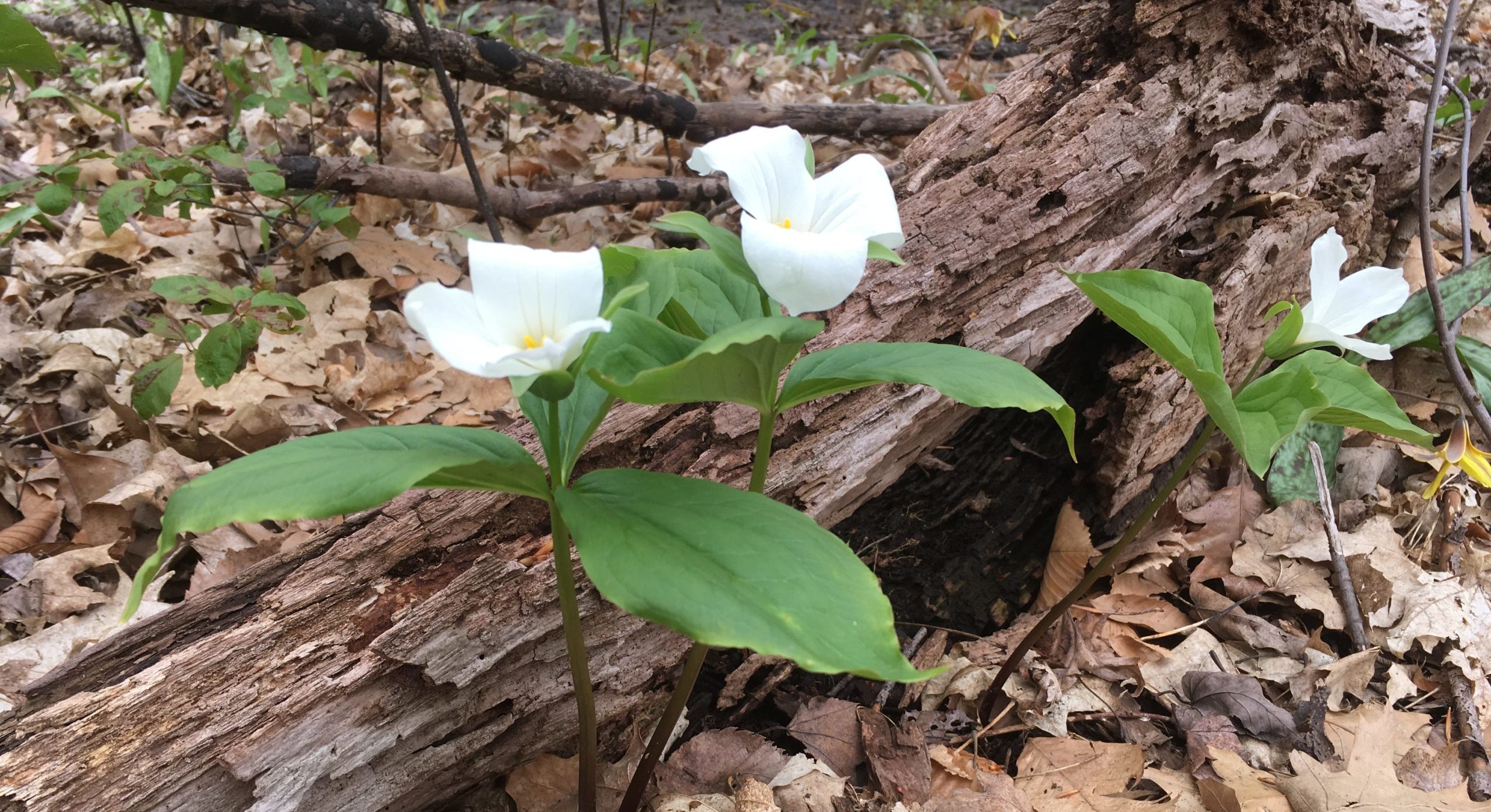What is erosion and why is it bad?
Erosion—which is when soil moves from one place to another, usually by wind or water1 —can have devastating impacts on our ravines. Erosion directly impacts private ravine landowners because it creates unstable slopes on private property. Unless properly managed, this can cause trees to uproot, gradual or sudden deterioration of your backyard forest, or in more serious circumstances, the collapse of decks, houses, and buildings.
How can you manage erosion?
A huge part of erosion management is removing invasive species and replacing them with native ones. This is because many root systems from invasive plants can increase soil erosion, while the root systems from our native plants encourage soil stability and positive interactions with soil bacteria.
In addition to removing invasive species and planting native ones, try to:
- Dispose of yard waste properly: While it is temping to leave yard waste in a pile on your property, this pile of sticks and leaves can act as a giant sponge keeping the ground beneath it wet. Too much moisture can weaken the soil and cause erosion, similar to a mud slide.2 Instead, sprinkle your yard waste evenly around your property in a thin layer, no more than 5 cm deep, being careful not to bury any native plants or spread any invasive plant roots or seeds in the process.3 Use our invasive plant fact sheets for specific disposal instructions to make sure you don’t accidentally make your invasive plant problem worse.
- Leave trees where they fall: Fallen trees are a part of forest life. A dead or dying tree can become a home for various different animal species, as well as a source of water and nutrients for the soil below it. These benefits can enhance soil stability and promote the growth of new native plants. If a tree falls down and does not pose a threat to any part of your property, leave it where it fell. Smaller fallen branches can be positioned horizontally on the slope. This way they collect leaf litter, which eventually breaks down to create soil where new plants can become established. If you feel the urge to “tidy up” but still want to manage your erosion, cutting your fallen trees into manageable pieces and moving them to the perimeter of your property will create areas for soil to build up, while also making many a salamander happy.
- Plant and maintain native canopy, midstory and understory: To effectively manage erosion long term, it is important to create and nurture native plants that are appropriate for your light conditions, soil type, and soil aspect. Develop a healthy midstory layer (native shrubs and small trees) and groundcover layer (herbaceous native plants), which will eventually grow and work together to create a healthy canopy, midstory, and understory. A diverse canopy of native plants establishes stable roots that will help minimize erosion.
- Tier steep slopes: Any slope greater than 3:1 (a slope that falls approximately 1 foot for every 3 foot distance) is difficult to manage. You can make your slope more gradual by placing large branches, moving logs or piles of twigs horizontally across your property and hold them in place with small stakes or tree branches staked into the ground. This will create a tiered effect. Add soil and leaf litter around your horizontal logs to allow plants to grow and encourage soil stability. Always remember to properly manage your water and manage your invasives, because they can largely contribute to steep slopes.
- Lay logs and branches horizontally across your property: Make sure they will not roll down your ravine slope. This encourages soil to build up around the logs and braches, providing a place for native plants to grow.4 Over time, this will create a more stable ravine slope.5
- Call a professional: Some erosion problems are too extreme for the average person to remedy. Trained professionals can help restore your unsafe or extremely steep slopes with engineered solutions. Contact a geotechnical engineer, Urban Forest Associates (UForA) or other qualified professionals familiar with Ecological Restoration.
Don’t dump
Dumping material on your ravine property (such as garbage, sand, gravel, or yard waste) is illegal under the Ravine and Natural Feature Protection by-law.
Dumped material:
- kills or prevents plants from growing
- increases soil erosion by smothering plants that stabilize slopes
- introduces non-native plants
- Is eaten by wildlife which can have harmful effects on their health
Learn how to properly dispose of your waste.
If you need to temporarily dump material on your property (for example, if your property is under construction), you must obtain the necessary permit.
Learn more about erosion prevention and control with What You Should Know as a Ravine or Bluff Property Owner and Erosion Control Treatment Selection Guide.
Footnotes
1 – Toronto and Region Conservation Authority. (2020). Understand – Erosion Risk Management. Retrieved from: https://trca.ca/conservation/erosion-risk-management/understand/
2 – From personal communication with Stephen Smith (Urban Forest Associates Inc.). June 12th 2020.
3 – From personal communication with Stephen Smith (Urban Forest Associates Inc.). June 12th 2020.
4 – From personal communication with Stephen Smith (Urban Forest Associates Inc.). June 12th 2020.
5 – From personal communication with Stephen Smith (Urban Forest Associates Inc.). June 12th 2020.

